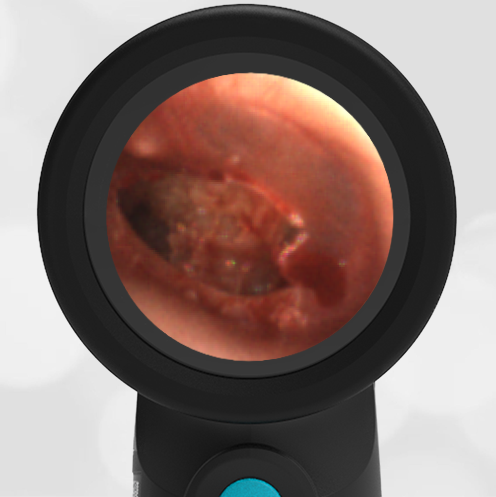
Primary Blast Injury
A teenager presents to the Los Angeles pediatric emergency department complaining of decreased hearing and pain in his left ear. Prior to presentation, the youth and his friends had been playing with fireworks when a large firecracker detonated close to the left side of his head. Examination of the left ear with the Wispr Digital Otoscope reveals this image.



